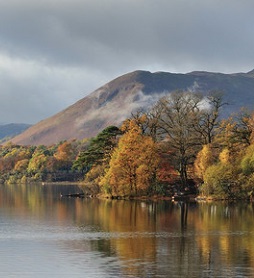
Partner news - Lancaster University
A walk in a park could soon be an entirely different experience if National Parks act on urgent recommendations made in a report released today.
Real-time information from environmental monitors and sensors could soon inform rangers of the conditions of footpaths and monitor the effects of climate change. Bins could send alerts when they are full to reduce unnecessary emissions due to bin collections. Your phone could sense when you tire during a walk, notifying you of the nearest pub for a rest stop. It could even send you the menu, or make a reservation on your behalf.
These are all examples of smart technologies in use across the world that are quickly changing the face of cities and open spaces, shaping new types of experiences. Now, experts suggest innovation and the ‘Internet of Things’ could be the key to better protecting the world’s National Park landscape while reducing costs and enhancing visitors’ experience.
Professor Edward Truch, a Director of the Connected Communities Research Lab at Lancaster University Management School, is the lead author of the Smart Parks: Bringing smart technologies to National Parks report, commissioned by the Lake District National Park Authority. He said: “National Parks are under increasing pressure to deliver more for less and with population booms, visitor numbers are increasing – putting greater strain on the natural environment. This report sets out business models and revenue streams for National Parks right across the world to consider, that can help address the gaps in budgets caused by cuts in public sector spending. The Smart Park model demonstrates how a high degree of connectivity and exchange of information can benefit all - from nature conservationists, tourists, businesses and communities, through to park authorities and emergency services. A Smart Park could open up opportunities for new types of visitor attractions, which protect rather than spoil some of the world’s most treasured landscapes.
“Visitors are already making use of intelligent connected devices through apps like Google, Ordinance Survey and Booking.com for things like navigation and accommodation bookings. Some areas of the world are already drastically cutting traffic pollution by introducing ‘smart’ car parking systems, for example, directing individual motorists to available car parking spaces.
“Research suggests there will be exponential growth in the number of worldwide devices connected to the internet over coming years, growing from 4.9bn in 2015 to around 25bn in 2025. National Parks need to act now and seriously consider these innovative technologies to better protect the environment and keep pace with future visitor expectations.”
The new vision of a ‘Smart Park’, or a national or urban park enhanced by the effective use of the Internet of Things, identifies potential solutions for the main challenge vast, rural national parks currently face - efficient and reliable internet connectivity. New and emerging networks are offered as solutions to the problem, such as cognitive radio technology which is considered to be the next frontier in wireless communications. The report suggests developing technology with built-in intelligence and agility to adapt to the environment it is operating in, can offer ‘greener’ more sustainable options for natural spaces - optimising transmissions to preserve power.
Lake District National Park’s Head of Strategy and Partnerships, Liam McAleese, said: “This collaboration between the Lake District National Park Partnership and Lancaster University Connected Communities Research Lab creates an opportunity for us to explore innovative technology that may one day benefit our communities and enhance the experience for the millions of visitors who enjoy the Park every year. Smart Parks is a fascinating piece of research and it has presented us with a broad range of options to consider for the future of the National Park.”
Chris Mahon, Chief Executive of the International Union for the Conservation of Nature Committee UK and Development Director of World Heritage UK said: “The report offers a very new look at how designated natural areas and other green spaces, and the people that visit them, can benefit from the latest innovations in modern technology. It's about new ways of delivering conservation as well as visitor convenience and experience enhancement. Commissioned by the same organisation responsible for the successful 2017 inscription of the UK's most recent UNESCO World Heritage Site, the 'English Lake District', this study will be of considerable interest to many people, including members of the UNESCO and IUCN networks, involved in land and people management.”
To read the report, visit: www.connected.community/smart-park